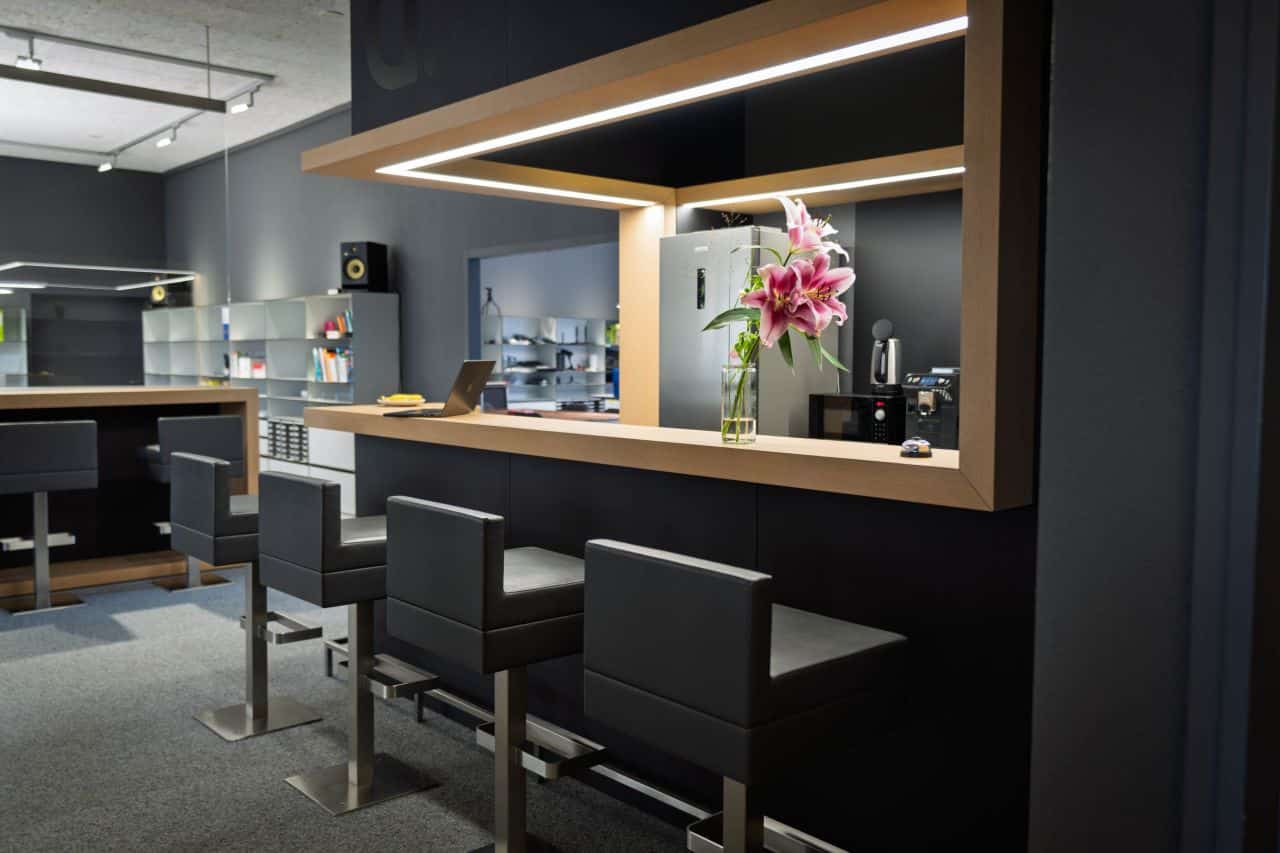In the fast-paced world of corporate video production, a teleprompter is an essential tool that ensures smooth delivery of scripts and messages. It is a device that projects a pre-written script onto a screen, enabling the speaker to read the text while maintaining eye contact with the camera. This article will delve into the intricacies of using a teleprompter for corporate video production, covering its history, types, benefits, and best practices in a comprehensive manner.
Corporate video production involves creating high-quality videos for business purposes. These videos can be used for various purposes such as marketing, training, product demonstrations, and internal communications. The use of a teleprompter in this process ensures that the video content is delivered in a professional and concise manner, reducing the chances of errors and retakes.
History of the teleprompter
The teleprompter was invented in the 1950s by Fred Barton Jr., an actor who wanted a device that would allow performers to read scripts while looking directly into the camera. The first teleprompters were large, cumbersome devices that were difficult to transport and set up. However, they quickly became an indispensable tool in the television industry, and their design and functionality have been greatly improved over the years.
Today, teleprompters are used in a wide range of settings, from newsrooms to corporate video production studios. They have become smaller, more portable, and more user-friendly, making them a vital tool for anyone who needs to deliver a script or message on camera.
Evolution of teleprompter technology
Over the years, teleprompter technology has evolved significantly. The first teleprompters used physical scrolls of paper to display the script, which were manually operated by a dedicated person. This method was prone to errors and required a lot of coordination between the speaker and the operator.
With the advent of digital technology, teleprompters have become more sophisticated and reliable. Modern teleprompters use digital screens to display the script, and the speed of the text can be controlled using a remote control or a foot pedal. This allows the speaker to control the pace of their delivery, making the process more seamless and efficient.
Types of teleprompters
There are several types of teleprompters available today, each with its own unique features and benefits. The type of teleprompter used in a corporate video production setting will depend on the specific needs of the project.
The most common types of teleprompters include the camera-mounted teleprompter, the floor-standing teleprompter, and the portable teleprompter. The camera-mounted teleprompter is attached directly to the camera and reflects the script onto a transparent glass screen in front of the camera lens. The floor-standing teleprompter, also known as a presidential teleprompter, is a standalone device that is positioned on the floor in front of the speaker. The portable teleprompter is a compact and lightweight device that can be easily transported and set up in various locations.
Camera-mounted teleprompter
The camera-mounted teleprompter is the most commonly used type of teleprompter in corporate video production. It is attached directly to the camera and reflects the script onto a transparent glass screen in front of the camera lens. This allows the speaker to read the script while looking directly into the camera, creating the illusion of direct eye contact with the audience.
This type of teleprompter is ideal for situations where the speaker needs to deliver a script or message directly to the camera, such as in a news broadcast or a corporate video. It is also useful for situations where the speaker needs to move around while delivering their message, as the teleprompter moves with the camera.
Floor-standing teleprompter
The floor-standing teleprompter, also known as a presidential teleprompter, is a standalone device that is positioned on the floor in front of the speaker. It consists of two glass screens that reflect the script towards the speaker, allowing them to read the text while looking out at the audience.
This type of teleprompter is commonly used in public speaking situations, such as speeches, lectures, and presentations. It allows the speaker to deliver their message in a natural and engaging manner, without the need to memorize the script or look down at notes.
Portable teleprompter
The portable teleprompter is a compact and lightweight device that can be easily transported and set up in various locations. It is ideal for situations where a traditional teleprompter is impractical or convenient, such as on-location shoots or small-scale productions.
Portable teleprompters often come with their own carrying case and can be set up on a tripod or a table. They use a tablet or smartphone to display the script, making them a cost-effective and versatile option for corporate video production.
Benefits of using a teleprompter in corporate video production
Using a teleprompter in corporate video production offers several benefits. It helps to ensure that the message is delivered in a clear and concise manner, reducing the chances of errors and retakes. It also allows the speaker to maintain eye contact with the camera, creating a more engaging and professional video.
Furthermore, a teleprompter can save time and resources in the video production process. By reducing the need for multiple takes and retakes, a teleprompter can help to streamline the production process and reduce costs. It also allows the speaker to focus on their delivery and body language, rather than worrying about memorizing the script.
Improving message delivery
One of the main benefits of using a teleprompter in corporate video production is that it improves the delivery of the message. By displaying the script in front of the speaker, a teleprompter ensures that the message is delivered in a clear and concise manner. This reduces the chances of errors, miscommunications, and awkward pauses, resulting in a more professional and polished video.
Furthermore, a teleprompter allows the speaker to maintain eye contact with the camera, creating a more engaging and personal connection with the audience. This is particularly important in corporate video production, where the goal is often to build trust and credibility with the audience.
Saving time and resources
Using a teleprompter can also save time and resources in the video production process. By reducing the need for multiple takes and retakes, a teleprompter can help to streamline the production process and reduce costs. This is particularly beneficial in corporate video production, where budgets and timelines are often tight.
Furthermore, a teleprompter allows the speaker to focus on their delivery and body language, rather than worrying about memorizing the script. This can result in a more natural and engaging performance, further enhancing the quality of the video.
Best practices for using a teleprompter in video production
While a teleprompter can be a valuable tool in corporate video production, it’s important to use it correctly to achieve the best results. Here are some best practices for using a teleprompter in corporate video production.
Firstly, it’s essential to write the script in a conversational tone, as if you’re speaking directly to the audience. Avoid using complex language or jargon that might be difficult to read or understand. Secondly, practice reading the script out loud before the shoot to get a feel for the pace and rhythm of the text. This will also help you to identify any awkward phrases or sentences that need to be revised.
Writing the ccript
When writing the script for a corporate video, it’s essential to write in a conversational tone, as if you’re speaking directly to the audience. This will make the text easier to read and more engaging for the audience. Avoid using complex language or jargon that might be difficult to read or understand. Instead, use simple, clear language that conveys your message effectively.
It’s also important to structure the script in a logical and coherent manner. Start with an introduction that outlines the topic or purpose of the video, followed by the main body of the text that elaborates on the topic in more detail. Finally, conclude with a summary or call to action that reinforces the main points of the video.
Practising the ccript
Before the shoot, it’s critical to practice reading the script out loud. This will help you to get a feel for the pace and rhythm of the text, and will allow you to identify any awkward phrases or sentences that need to be revised. Practice reading the script in front of the teleprompter to get used to the scrolling speed and the positioning of the text.
During the shoot, try to relax and speak naturally, as if you’re having a conversation with the audience. Avoid rushing through the script or speaking in a monotone voice. Instead, use variations in tone and pace to make your delivery more engaging and dynamic.
Conclusion
In conclusion, a teleprompter is an invaluable tool in corporate video production. It ensures smooth delivery of scripts, saves time and resources, and enhances the overall quality of the video. By understanding the different types of teleprompters and following best practices, you can harness the power of this technology to create professional and engaging corporate videos.
Whether you’re a seasoned professional or a novice in the field of corporate video production, the use of a teleprompter can significantly enhance your production process. As technology continues to evolve, so too will the capabilities and applications of teleprompters in the corporate video production landscape.



